The technological advances that have occurred in 3D printing over the last few years have seen its use expand into many areas including engineering, medicine, fashion, education, rehabilitation, and more.
What is 3D printing?
3D printing is a technology that allows one to produce 3D samples using a computer, specialized design software and a 3D printer. The printers typically use a variety of polymers to print the sample, laying them down layer after layer, resulting in a 3D sample as designed in the software. Today we can see 3D printing trials using a variety of other materials including soft tissue for printing biological structures (ears, heart, liver, etc…) and elements for printing food products.
A 3D printer in action at Beit Issie Shapiro
3D printing has many advantages. For example, it allows for printing customized and personalized objects, printing complicated models for relatively low cost, and printing low weight parts. The 3D printing market is just beginning to bloom but already you can find 3D printers in public spaces in the US, in schools, in printing centers, and even in private homes. In the medical-rehabilitation world 3D printers are being used to produce prosthetics, splints, and other assistive technologies.
It can be said that 3D printing is having a significant impact on production of these devices. In the past, production required measurements using rulers and patterns and drawing and design by hand. It was an expensive process and was typically the domain of designers and engineers. Today, with 3D printers, the design of assistive devices has become accessible to anyone: occupational therapists, speech therapists, physiotherapists, teachers, doctors and people with disabilities themselves. What is required to develop assistive devices is a clinical understanding of the abilities and needs of the individual with disabilities, competency in one of the planning and design programs (there are a variety of programs available, Tinkercad is an example tinkercad.com), and access to a 3D printer.
The three educational and therapeutic areas that have seen significant use in 3D printing are:
1. Customization of assistive devices for daily activities
3D printing can be used to produce various assistive aids for daily living including aids for dressing, eating, grasp, writing, hygiene, etc.
Here, is a cup holder printed for A., a 60 year old man, who following a CVA (stroke) was left with aphasia and right hemiplegia. A. uses a cane for walking. This cup holder is meant to assist A. to hold a cup while walking, with one hand holding the cane, and the cup holder attached to the other hand. This cup holder was the final project of Ron Dar, a speech therapist at the Adler Aphasia center, Hadassah Academic College, Jerusalem, in a 3D printing course he took at Beit Issie Shapiro.

Cup holder. source: http://www.thingiverse.com/thing:1707784:

Assistive devices for writing and typing. Source: https://www.pinterest.com
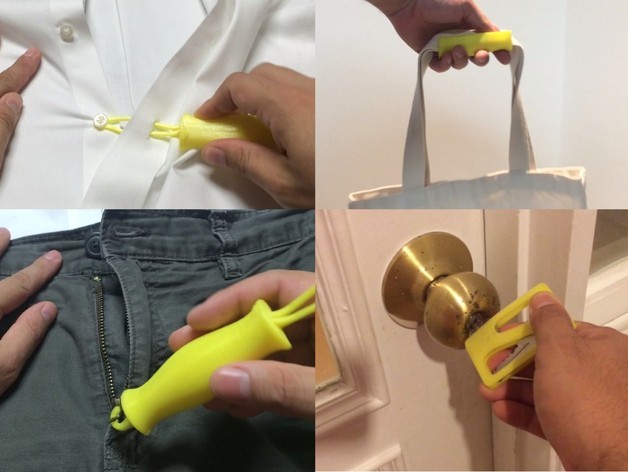
Grasping aids for people with Rheumatoid Arthritis (RA). Source: http://www.thingiverse.com/thing:899126

Bottle opener. Source: https://www.thingiverse.com/thing:40131
2. Adaptation of toys and learning materials
3D printing can be used to enhance learning materials by providing objects with tactile features that users can touch. For example this tactile model of the egg with 3D features pictured below is part of a tactile books project by the University of Colorado.
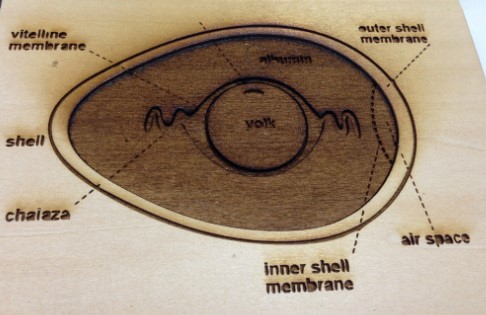
Source: https://tactilepicturebooks.org
Shown below is a tactile picture book project for preschool children, also by the University of Colorado,
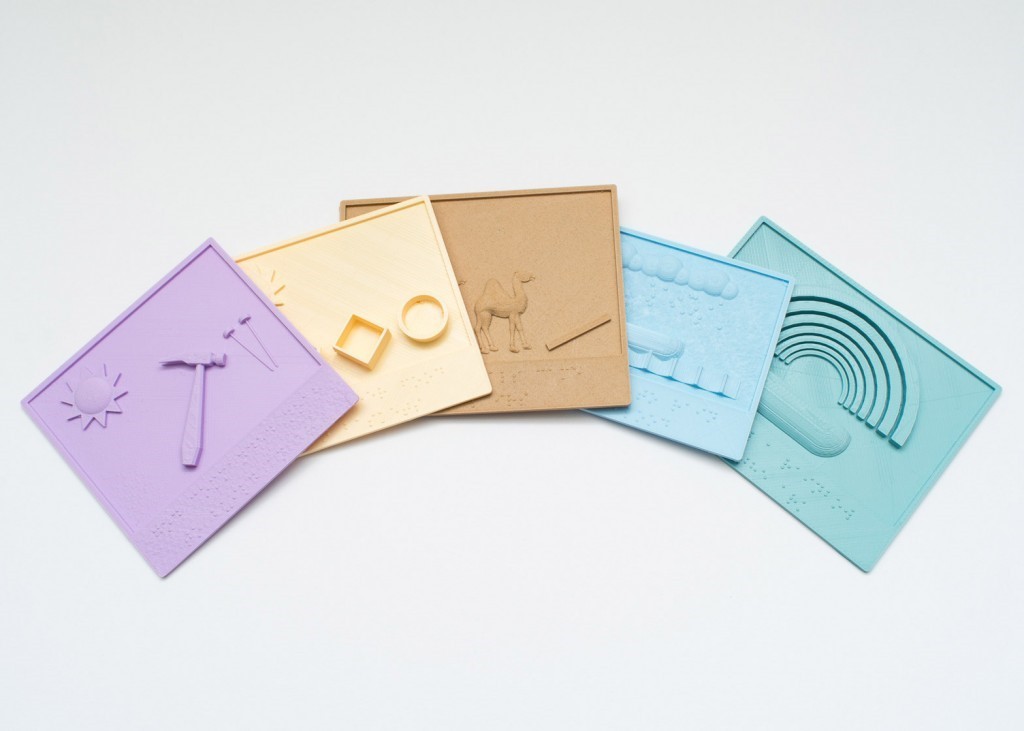
Tactile adaptation to picture books. Source: http://tpbp.wpengine.com/
And here we see an example of a tactile adaptation of the card game Taki (similar to the game Uno), created by grade 9 students in Tel Aviv, as part of a course for outstanding students.
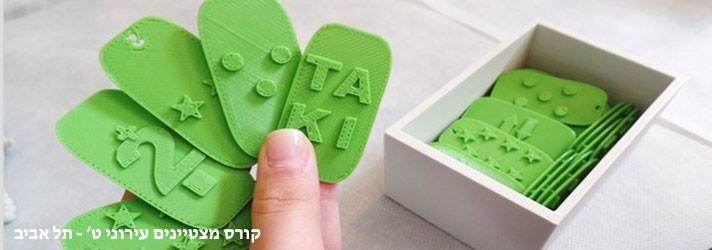
Tactile adaptation to a card game. Source: http://www.thingiverse.com/thing:1336230
3. Prosthetics and Splints
3D printing has a substantial impact on the world of prosthetics. Today one can plan a colorful customized prosthetic and print it on a home printer, significantly reducing costs. There are a number of companies that develop prosthetics like this and even organizations that produce and supply 3D printed hands on a volunteer basis, like Enabling the Future. This organization matches children needing prosthetics to clinicians, engineers and designers in order to provide them with 3D printed hands. It services children from all over the world including those in third-world and war-torn countries.
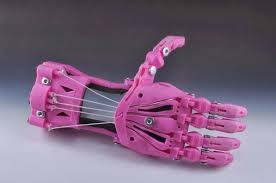
3D printed hand. Source: http://enablingthefuture.org/
In occupational therapy departments, 3D printing is being used to make static and dynamic splints. Here are two examples:
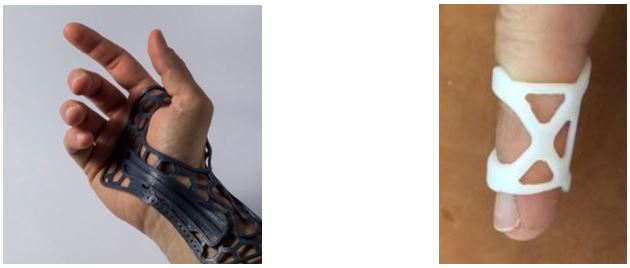
Wrist splint DIP and extension splint. Source: https://www.pinterest.com
From a personal perspective…
As an OT I have worked many years in matching assistive technology for clients and finding creative computer access solutions for people with disabilities. More than once I designed splints for typing, or created a ring with a bulging piece for typing. Sometimes we used simple materials, some esthetic and some not, and often it was difficult to perfectly match the needs of the user.
In my opinion, it seems that 3D printing has great potential to improve the quality of life of people with disabilities by providing options for highly customized and affordable assistive devices for daily living activities, play and leisure, educational materials, and prosthetics. I believe that the scope of use of 3D printing in rehabilitation and special education settings will grow, and in the not too distant future we will find 3D printers in every institute/clinic/special education school/rehabilitation department, allowing clinicians to make a wide variety of adaptations for their clients that will be personalized, esthetic, respectable, creative, clean, and affordable.
Thanks
To Maayan Kahana, product designer, with a Master’s degree in medical device design from the Technion Israel Institute of Technology, head of printing at MILBAT, partner in using3d, a pioneering company in the field of 3D printing for people with disabilities in Israel, and coordinator of the 3D printing course at the Trump Training Institute of Beit Issie Shapiro, that enlightened me to the world of 3D printing.
To Laura Levin, for donating the 3D printer to Beit Issie Shapiro, and in essence allowing our clinicians and students to benefit from 3D printing.
To Dr. Yafi Levanon and Dr. Sigal Portnoy from Tel Aviv University for their lecture during the course “Clinical Aspects and Applications for Customizing 3D Printed Splints”
And to the participants of the first 3D printing course, for dreaming and printing their ideas, that were in essence the inspiration for this post. Pictures of the final projects can be seen here.



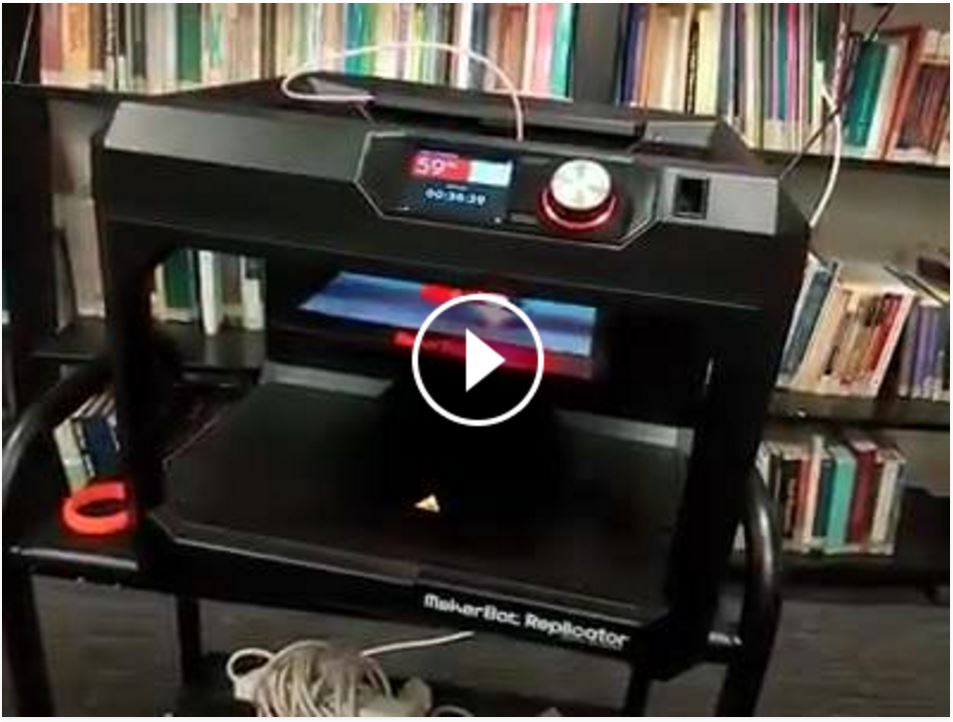
Leave a Reply